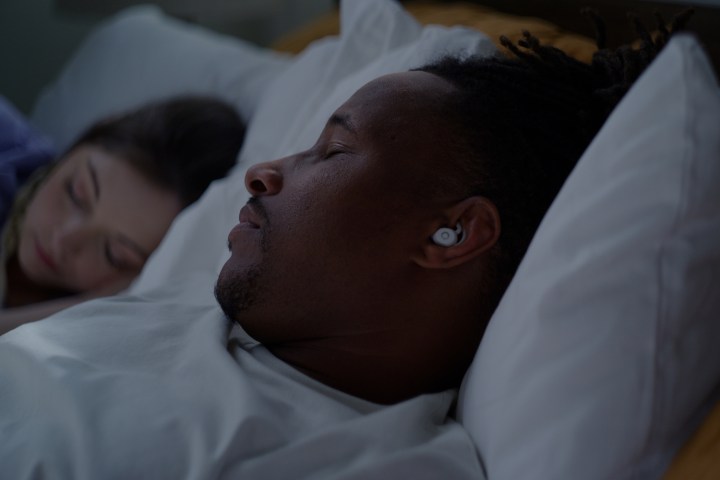
The Bose Sleepbuds are back — except this time, they aren’t made by Bose. Instead, they’re from a new company named Ozlo. Ozlo has closer ties to Bose than you may expect, and the new Sleepbuds are far more exciting than the repeated name suggests, as Ozlo has entirely reimagined the functionality to create an all-in-one device aimed at developing and maintaining healthy sleeping habits.
Digital Trends spoke to N.B. Patil, CEO of Ozlo, ahead of the Sleepbuds’ debut on Kickstarter to understand what makes the new product special.
How did the new Sleepbuds come about?
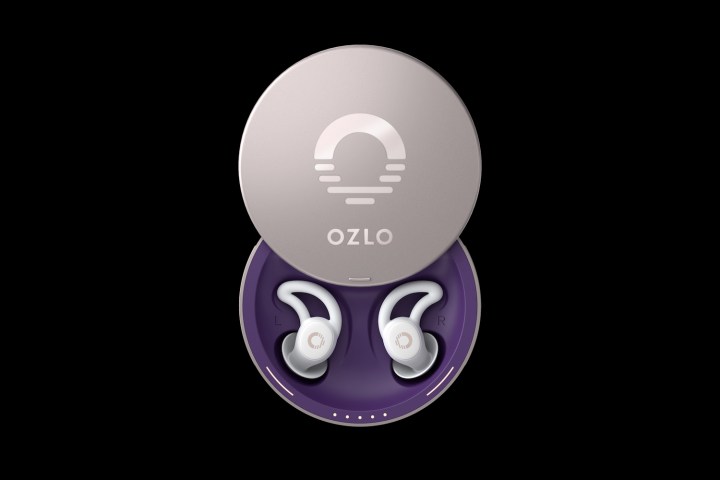
If you don’t know the product, the original Bose Sleepbuds and the Sleepbuds 2 are tiny wireless earbuds used to play white noise and block out external sound when you’re trying to sleep. I’m a fan of the Sleepbuds 2 and tested them against one of the few competitors, the QuietOn 3, and still use them regularly today. Unfortunately, the Bose Sleepbuds 2 have been discontinued from Bose’s product portfolio, an unfortunate situation given how unusual they are, but Patil and Ozlo are bringing them back in a very exciting way.
“At Ozlo, we see an opportunity to use the power of sound to help people sleep, and we’re building an entire ecosystem around Sleepbuds, from the hardware to software and even therapy, so that you can actually have a better relationship with sleep,” Patil told me. But how did he get to this stage, and what about Bose?
“I started working at Bose in 2000,” Patil revealed. “The opportunity came up when Bose was actually trying to wind down the [Sleepbuds]. I use [Sleepbuds] regularly and love the product, and thought if we let this die, it’s going to die. So I bought some assets and licensed the technologies to build the Ozlo Sleepbuds that you see today.”
This explains why the Ozlo Sleepbuds are named as they are. Ozlo has the rights, and that is why they look very similar to Bose’s original Sleepbuds. It’s literally by design. The shape is almost identical, right down to the cleverly shaped wings that hold the buds in your ear. There is a negligible deviation in size, according to Patil, but the reason for it is important: the Ozlo Sleepbuds have a new battery inside.
“We switched to a standard lithium-ion battery that is much denser and will be more effective in managing the charge cycles compared to the customized battery [used in the Bose Sleepbuds],” Patil confirmed. This is crucial, as the original Sleepbuds 2’s battery would deplete itself when the case was not being charged, potentially leaving you with a flat battery when you actually wanted to use them. It’s also essential here because the Ozlo Sleepbuds have gained a lot more functionality compared to the Bose model.
Two new features to help you sleep even better
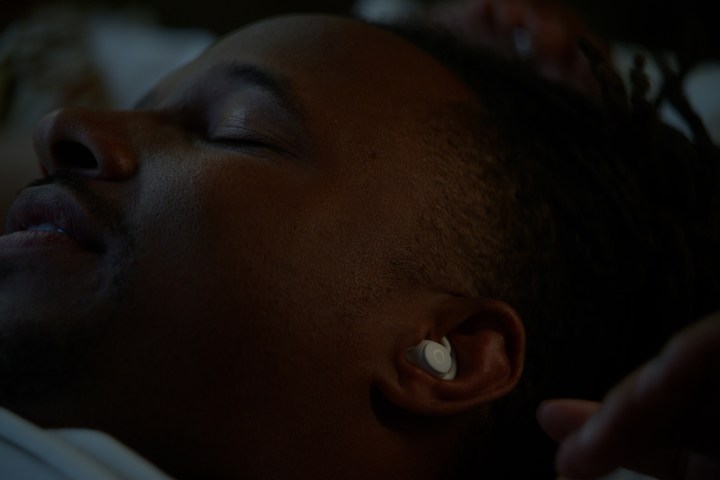
“You can stream audio from any source,” Patil told me, a significant change over the original Bose Sleepbuds, which only played a selection of curated sounds from the app.
“You can use Spotify, you can use YouTube, whatever the source you can run on your phone, you can stream the audio to the Sleepbuds,” he continued. “In addition to that, we are customizing the masking sounds that will help you block your snoring partner and noise around you so that you can stay asleep longer. Plus, you can customize the behavior, meaning you can stream audio for an hour, then switch to the masking sound or let our system decide when is the right time to switch based on your sleep staging.”
How do the Ozlo Sleepbuds understand what stage you’re at in your sleep? Ozlo has built sensors inside to track such things, which is another huge change from the original Bose Sleepbuds.
“We have sensors in the Sleepbuds that will track your sleep staging, and we use this information to give you a comprehensive sleep report in the morning. We are monitoring respiration rate and movement, and we are working with a third party to provide accurate sleep staging. It’ll be in a beta stage for the first few months, but as we learn more, then we can actually make it better.”
An entire sleep ecosystem
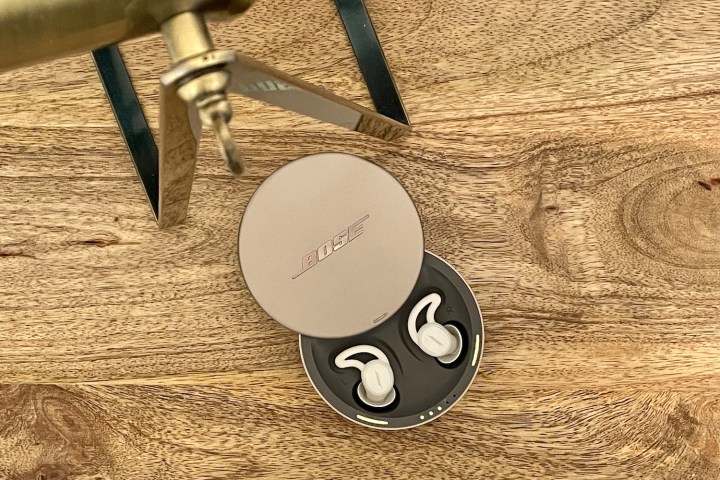
The Sleepbuds do not include a heart rate sensor, so they won’t return heart rate data, blood oxygen readings, or heart rate variability (HRV) information, meaning they won’t replace an Oura Ring or Samsung Galaxy Watch 6 for in-depth sleep tracking, but Ozlo has utilized the case and the software in an exciting way to further enhance the Sleepbuds’ sleep-tracking ability.
The case has a temperature sensor, a microphone, and a light sensor. Ozlo will also be releasing a software development kit (SDK) for developers to integrate data collected from the Sleepbuds and case, helping you better understand what is affecting your sleep. This works for both positive and negative changes. For example, the case’s sensors will tell you through the Ozlo app whether a temperature change in the room or unexpected sound made a difference to your sleep quality, while meditation and relaxation apps (should they integrate Ozlo’s SDK) can assess whether the streamed audio helped you sleep better or not.
Together, the Sleepbuds and case should provide a different picture of your sleep patterns compared to a sleep tracker like the Oura Ring — and potentially complement it rather than replace it. The app will provide plenty of personalization too, allowing you to stream audio in the way you want and for how long you want. Finally, the new battery has enough energy for the Sleepbuds to stream audio for up to 10 hours, so easily all night. The case’s battery provides four days’ worth of earbud use, and although it will be recommended that the case remains plugged in overnight, it won’t be essential. Ozlo says it has eliminated the annoying battery drain from the original Sleepbuds 2, so they will always be ready when you are.
How much will all this cost?
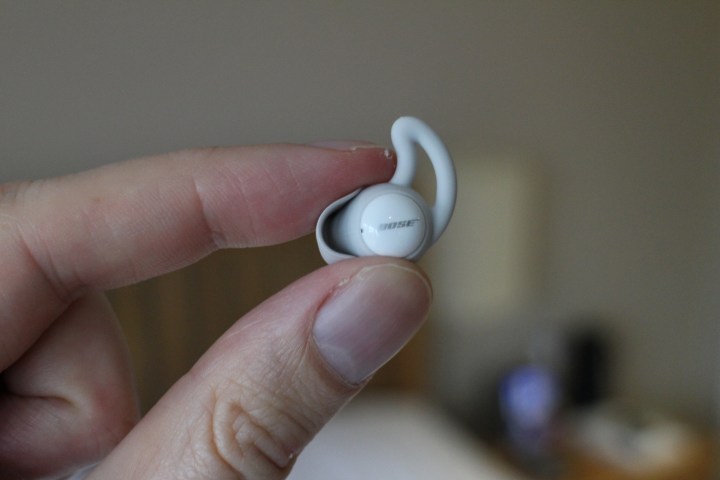
“Initially, we’re going to launch on Kickstarter, and it’s going to be priced at $299,” Patil said. “We will start fulfilling the orders between September and December this year. Then we’re going to be selling directly through Ozlo’s website, and we also have some retail partners already signed up. Right now, we are making the Sleepbuds available in the U.S., Canada, the U.K., and Australia.”
Unlike some other fitness and sleep products, Ozlo will not use a general subscription model for the Sleepbuds, at least not to access the initial, basic functionality.
“I think we may end up offering a subscription where through a monthly fee you get a free replacement if you lose or have an earbud stolen, or something like that,” Patil told Digital Trends. “Or when we are adding some additional diagnostics to treat specific symptoms. This is where we think we can justify a subscription, but not for basic sleep staging or providing the information that you already pay for in the hardware.”
Ozlo doesn’t intend to make the Sleepbuds a one-off product, and Patil described it as the first step in creating a “sleep and audio technology company with an ecosystem of non-pharmaceutical sleep products to simplify sleep rituals for clinical benefit, without the use of medication.”
The Bose Sleepbuds 2 had one basic function — to use ambient sound to help you sleep better — and it has proven to be surprisingly beneficial. Ozlo has taken that basic formula and added a lot of new functionality. It’s going to be very interesting to see how this improves what started out as an effective, but flawed product.
The Ozlo Sleepbuds are available through Kickstarter starting August 22.
Editors' Recommendations
- Have a Google Pixel phone? You’re about to get these new features
- How a tiny, fun phone changed my mind about foldables
- This tiny sensor is about to change your phone camera forever
- QuietOn 3 vs. Bose Sleepbuds 2: White noise or no noise?
- These weird new earbuds are designed to dehumidify your ears while you listen




